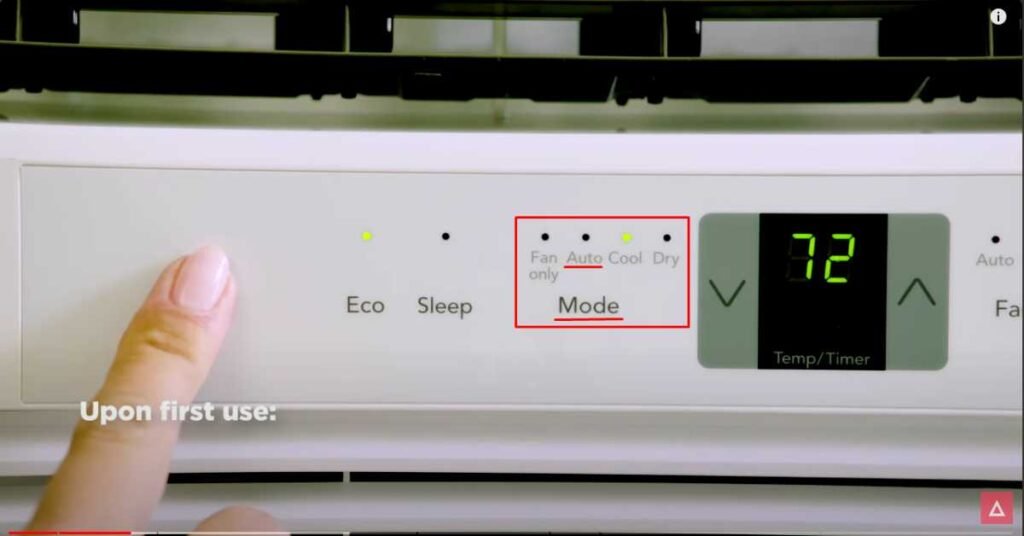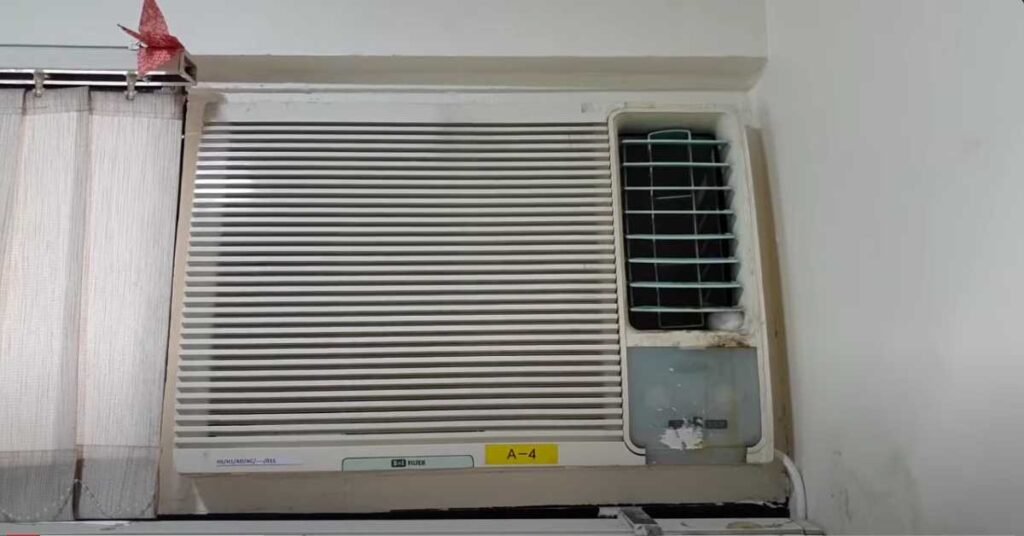What Does Auto Mean On A Window Air Conditioner?
Window air conditioners are popular for cooling single rooms or small spaces. They provide cost-effective solutions with simple setups. Understanding their settings can help you use them more efficiently.
One important setting on many window air conditioners is the “auto” mode. This mode can save energy and improve comfort. Let’s explore what “auto” means on a window air conditioner.
Auto Mean On A Window Air Conditioner
The “auto” setting on a window air conditioner allows the unit to adjust its fan speed and cooling output automatically. It uses sensors to detect the room’s temperature. The unit then decides the best way to maintain your desired temperature.
This is different from manual settings where you control the fan speed and cooling level. In “cool” mode, you set a specific cooling level. In “fan” mode, the unit circulates air without cooling. In “dry” mode, the air conditioner reduces humidity. The “auto” setting simplifies this by making adjustments for you.

How the “Auto” Setting Works
When you set your window air conditioner to “auto,” it starts monitoring the room’s temperature. Sensors inside the unit detect changes in temperature. Based on these readings, the air conditioner adjusts its fan speed and cooling output. For example, if the room gets warmer, the unit will increase its cooling. If the room is cooler, it will reduce the cooling or turn off the compressor.
The fan speed also changes. On a hot day, the fan might run at a higher speed. When the temperature drops, the fan will slow down. This keeps the room at a consistent temperature without you needing to adjust settings constantly.
How to Set Window AC on Auto Mode?
Setting your window air conditioner to “auto” mode can optimize your comfort and energy efficiency.
Here are some simple steps to help you set your window AC on auto mode effectively.
1. Locate the Control Panel
First, find the control panel on your window air conditioner. Typically, you’ll find the control interface conveniently positioned at the unit’s forefront.
It contains various buttons and a digital display. Look for buttons labeled with different modes, such as “cool,” “fan,” and “auto.” If you have a remote control, the buttons will be similar. Familiarize yourself with these buttons, as you will use them to set the mode.
2. Turn on the Air Conditioner
Next, turn on your window air conditioner. To power up the system, simply press the designated button on either the control panel or remote device. The unit will start running in the mode it was last set to.
You may hear the fan start or feel cool air coming out of the vents. Ensure the unit is plugged in and the power outlet is working. If the air conditioner doesn’t turn on, check for any issues with the power supply or consult the user manual.
3. Select the “Auto” Mode
Now, press the button labeled “mode” on the control panel or remote. Navigate through the settings until “auto” mode is selected. The digital display will show “auto” or a similar indicator.
In “auto” mode, the air conditioner will adjust the cooling and fan speed automatically based on the room temperature. Ensure the display confirms the selection to know the unit is in the correct mode.
4. Set the Desired Temperature
After selecting “auto” mode, set your desired room temperature. Use the temperature up and down buttons on the control panel or remote. Choose a comfortable temperature, typically between 72°F and 78°F (22°C to 26°C).
The air conditioner will now maintain this temperature by adjusting its settings automatically. Ensure the display shows the desired temperature for accurate operation.
5. Adjust Additional Settings
Finally, adjust any additional settings for optimal performance. Many window air conditioners have extra features like timers, sleep modes, and fan speed controls. For example, set a timer to turn off the unit after a certain period or enable sleep mode for nighttime use. These settings can enhance your comfort and save energy. Consult your user manual for specific instructions on using these features effectively.

Benefits of Using the “Auto” Setting
Using the “auto” setting on your window air conditioner can offer numerous advantages. This mode allows the unit to adjust its cooling and fan speed automatically, ensuring a comfortable and energy-efficient environment.
Let’s explore the key benefits of using the “auto” setting on your window air conditioner.
1. Energy Efficiency: The unit adjusts cooling based on the room temperature, saving electricity and lowering bills.
2. Consistent Comfort: Maintains a steady temperature without frequent manual adjustments, keeping you comfortable.
3. Reduced Wear and Tear: By not running at full power constantly, it extends the life of the air conditioner.
4. Convenience: Automatically changes settings, so you don’t have to keep adjusting the unit.
5. Optimal Fan Speed: Adjusts the fan speed to match the cooling needs, providing better air circulation.
6. Noise Reduction: Operates more quietly by lowering fan speed when less cooling is needed.
7. Temperature Accuracy: Uses sensors to detect room temperature, ensuring precise adjustments for comfort.
Potential Drawbacks
While the “auto” setting is useful, it may not be perfect in all situations. In extremely hot or cold weather, the unit might struggle to maintain your desired temperature. You might need to switch to a manual setting for better control.
Also, the “auto” setting limits your control over fan speed. Some people prefer a specific fan speed regardless of temperature. In this case, manual settings might be better.
Practical Tips for Using the “Auto” Setting
To get the most out of the “auto” setting, consider these tips:
- Set a Comfortable Temperature: Choose a temperature that feels comfortable. The air conditioner will do the rest.
- Combine with Other Features: Use the “auto” setting with features like timers and sleep mode. Set a timer to turn the unit off when you leave home. Sleep mode can adjust the temperature gradually at night.
- Regular Maintenance: Keep the air conditioner’s sensors and filters clean. Dirty sensors can affect the unit’s performance. Regularly maintaining and replacing filters ensures optimal performance.
Conclusion
The “auto” setting on a window air conditioner offers many advantages. It saves energy, enhances comfort, and reduces wear and tear. However, it might not be perfect for extreme weather. By understanding how it works and using it effectively, you can enjoy a comfortable and efficient cooling experience.






